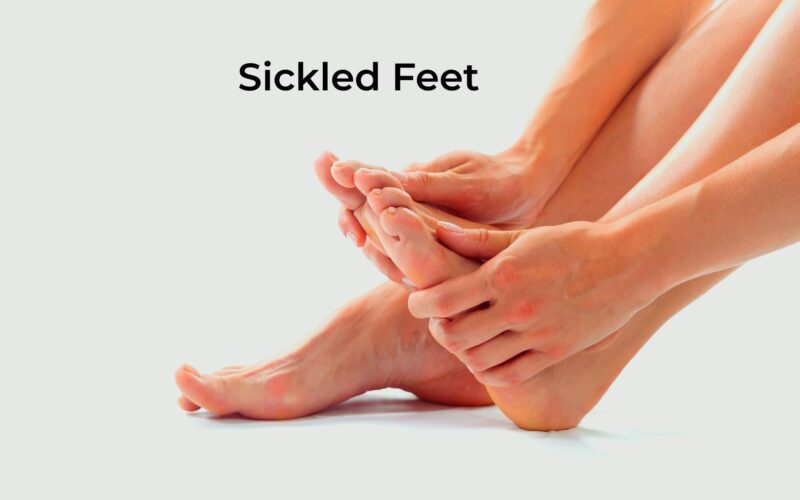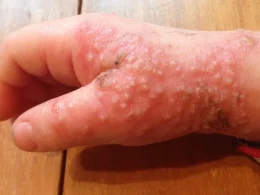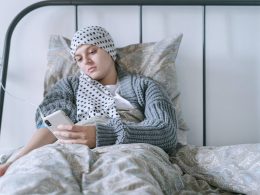Many people have never heard of the ailment known as “sickled feet,” which is characterised by a foot structure that is different from the norm. In this post, we’ll dig into the subtleties of sickled feet, investigating its definition, prevalence, and causes.
Understanding Sickled Feet
Anatomical Features
Exaggerated arch and inward curving of the toes are two distinguishing characteristics of a sclerotic foot. The foot’s performance may suffer because of these anatomical differences.
Common Symptoms
Those who have sickled feet may struggle to locate shoes that fit properly and have persistent pain in the arch. The ability to recognise and respond promptly to these signs requires an understanding of their causes.
Health Implications
Impact on Posture and Balance
Because of their abnormal shape, sickle feet can affect a person’s posture and balance. This can cause instability in a variety of situations. We’ll look into how this can influence your skeletal muscles and bones.
Associated Discomfort and Pain
Sickled feet are frequently accompanied with chronic discomfort. We’ll talk about the many kinds of pain people experience and how it might affect their life.
Diagnosis and Identification
Medical Examinations
Correct diagnosis is essential for efficient treatment of sickled feet. We will describe the diagnostic procedures and tests that medical experts employ to detect this illness.
Identifying Sickled Feet in Different Age Groups
The symptoms of scleroderma in the foot might change over a person’s life. Recognising these differences is crucial for correct identification, especially in younger and older individuals.
Preventive Measures
Exercises and Stretches
Feet might benefit from preventative care including targeted workouts and stretches. If you have sickled feet, we have a set of exercises designed to help you strengthen those muscles.
Footwear Considerations
People who have sickled feet need to be more careful while selecting their footwear. We’ll explain how to get comfortable shoes with the right amount of support.
Treatment Options
Physical Therapy
Sickle feet are often treated with physical therapy. We’ll take a look at the many therapies and exercises that have been shown to help people with foot problems.
Orthopedic Interventions
Orthopaedic surgery may be required for more serious injuries. We’ll talk about both surgical and non-surgical choices for those who want a permanent fix.
Case Studies
Real-life Examples
True accounts of people coping with sickle cell foot will be discussed, shedding insight on their trials and accomplishments. The goal of these case studies is to give readers a viewpoint that they can relate to.
Success Stories and Challenges
We will highlight the successes of persons with sickled feet, both past and present, and explore the continued difficulties they encounter.
Daily Habits for Foot Health
Importance of Proper Footwear
Adopting the right footwear as a daily habit is an important step towards a healthier lifestyle. We’ll stress the significance of getting shoes that accommodate sickle foot specifically.
Exercises for Strengthening Feet Muscles
Sickled-footed people might benefit from simple yet effective workouts that help with their general health. We’ll start off with a programme designed to build up the muscles in your feet that hold up your arches.
Addressing Misconceptions
Common Myths
Sickled feet are often misunderstood due to common misunderstandings. For a clearer picture of this issue, we’ll bust some myths and fill you in on the facts.
Clarifying Misconceptions with Scientific Evidence
Our goal in providing this scientific data is to dispel myths and provide readers a more complete picture of sickled feet.
Impact on Daily Life
Navigating Challenges in Various Activities
Sickle feet provide special difficulties in doing routine tasks. We’ll talk about ways to deal with these obstacles and keep up our active routines.
Coping Mechanisms for Those with Sickled Feet
Resilience is required while dealing with a foot ailment. We’ll talk about ways of dealing with problems on the inside and how to keep a good outlook.
Support Systems
Community and Online Resources
Sickle-footed people need to surround themselves with positive people. We’ll tell you where to find local groups and online forums where you may find friendship and understanding.
Support Groups for Individuals with Similar Conditions
Finding a community of people who understand what you’re going through may be really reassuring. We’ll spotlight organisations that help people with sickled feet.
Psychological Impact
Addressing Mental Health Aspects
The mental toll of dealing with a chronic physical illness is real. We’ll talk about how having sickled feet might affect your mental health and provide some tips for dealing with the effects.
Boosting Confidence and Self-esteem
Physical impairments can be a test of self-assurance. We’ll talk about ways to help people with sickled feet feel better about themselves.
Inclusive Designs
Incorporating Accessibility in Architecture
The needs of people with different shaped feet must be taken into account when designing accessible environments. We’ll look into buildings that make it easy for people with sickle feet to get about.
Innovations in Footwear for Diverse Foot Shapes
The shoe business is adapting to serve customers with a wider range of foot sizes and shapes. New shoe designs that accommodate sickle feet will be highlighted.
Future Research and Developments
Ongoing Studies on Sickled Feet
Investigations into sickle feet continue. Current research and future developments that may affect our ability to understand and treat this condition will be discussed.
Potential Breakthroughs in Treatment and Prevention
We will investigate potential medical discoveries that could transform the treatment and prevention of sickled feet as they become available.
Conclusion
recognizing and managing sickled feet is essential for anyone coping with this specific disease. Sickled-footed people can manage their condition by using a holistic approach that includes diagnosis, specific exercises, and social support. Keep in mind that taking preventative action and maintaining an optimistic outlook are both crucial to improving your foot health and well-being. Start moving toward foot ease and convenience by adjusting your footwear.
Faqs
What causes sickled feet?
Sickled feet can be caused by a combination of hereditary causes and aberrant development throughout childhood. Understanding the underlying issues is key for good management.
Is surgery the only solution for sickled feet?
Although surgery may be necessary in extreme circumstances, many people find relief with non-surgical measures like as physical therapy and the right footwear. The method used is determined on the extent of the problem.
Can sickled feet be prevented in children?
While there may be a hereditary component, encouraging healthy behaviors like wearing supportive shoes and doing foot exercises on a regular basis will help reduce the likelihood that a kid would have sickled feet.





